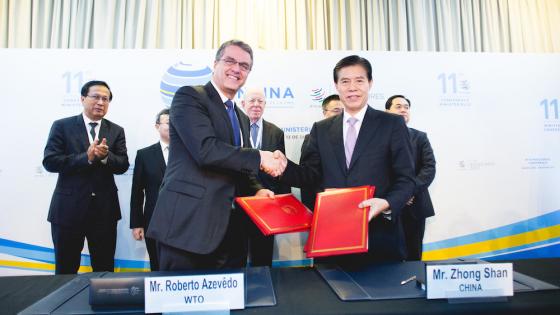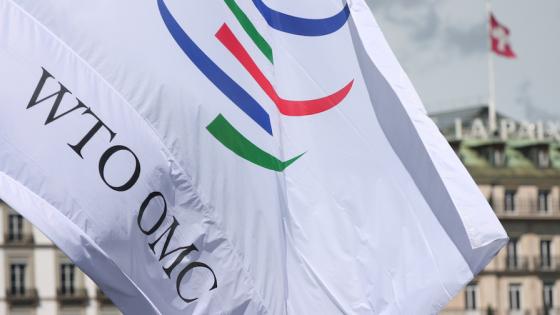Negotiations under the Doha Round hit a major stumbling bloc when the G-4 (Brazil, India, US and Europe) recently failed to reach agreement on the terms for multilateral trade liberalisation. Some commentators argue that many developing countries would not greatly benefit from across-the-board tariff cuts since they already face zero (or close to zero) tariff rates on their exports to developed countries under various preference schemes. If tariff cuts were to be granted to all WTO members under the Doha Round, the relative advantage enjoyed by developing countries would diminish. Thus some developing countries have contended that they have little to gain from multilateral trade liberalisation yet they are asked to give “concessions” by granting big tariff cuts. Our recent research suggests that the current preference schemes are not as generous as they appear and thus developing countries have a lot to gain from multilateral trade liberalisation in terms of access to large markets in developed countries.
[1]
Under a special GATT clause, developing countries were given preferential access to developed countries’ markets in the 1970s without having to lower their own import barriers. These preferences entitle developing countries to export their products to developed countries at lower tariff rates than those applied to other WTO members. It is important to realise that not all tariffs are eligible for preferences, and in many cases countries do not apply for the preferences they are entitled to because of complex rules governing the use of preferences. In such instances, the developing country exporter ends up paying the same tariff rate as other WTO members (called the MFN rate). For example, the share of total imports from less developed countries that entered the US under the preference schemes was only 44% in 2002 because many products are excluded from eligibility. In the EU, although most products are eligible for preferences, the utilisation rates are low mainly due to the difficulties of accessing these preferences.
[2]
Mr Brabeck-Letmath, chief executive of Nestle, the food company claimed “we still have enormous, enormous barriers” against African exports to the EU (Financial Times, March 1, 2007). Yet others cited in the article claim that most African countries can export almost anything to the EU tax-free and challenged him to name examples of products and countries kept out of European markets. In fact there must be many such examples given that taxes were collected on over 10% of African-LDC exports to the EU that were potentially eligible for preferential treatment in 2003. Specific examples include: Belgium charging tariffs on €21.3m worth of fish from Tanzania, €20.8m worth of fish from Uganda, €6.5m of peanut oil from Senegal and €4.4m of tobacco from Malawi; Germany charged duties on €9.5m worth of boats from Liberia; Spain charged duties on €6.5m worth of shrimp from Guinea; and the Netherlands levied tariffs on €5.1m worth of tobacco from Malawi and on €4.2m worth of tobacco from Mozambique. The import tariff imposed on these goods ranged from 1.7% for boats to 12% for shrimp.
Despite preferences granted to developing countries, the average tariffs paid are sometimes higher on developing country exports to the EU and the US than those paid on developed country exports. For example, the average tariffs on non-African LDCs’ goods exported to the US were 13% compared with only 1% tariff paid on developed country exports to the US. Although these differences were smaller on exports to the EU, they still persist (5% tariff on non-African LDCs and 3% on developed countries exports).
Because a large share of developing countries’ exports do not actually enjoy preferences in practice, lowering tariffs under the multilateral system is likely to lead to a net increase in market access. That is, the gains in market access from lower MFN tariffs offset the losses due to preference erosion for many developing countries. A simulated uniform cut in tariffs of 40% in both the United States and the European Union leads to an increase in import demand of 2% averaged across all countries, although the gains are not uniform across countries or regions. Our research suggests that non-African LDCs would enjoy higher than average increases in demand for their products, of 8.5%, and African LDCs experience a loss of 0.1% in demand for their products.
Large developing countries would receive substantially improved market access following a successful conclusion to the Doha Round (Table 1). A 40% cut in EU and US tariffs would increase exports from Brazil, China and India to the EU and US by around 10%. These estimates are larger than some other studies predict mainly because we exploit information on how much developing countries’ exports actually benefit from existing trade preferences rather than assume that their exports automatically receive such preferences.
Table 1: A Successful Round Greatly Increases Brazilian, Chinese and Indian Exports
|
Country
|
Exports (US
|
Share to US
|
Share to EU
|
Average US
|
Average EU
|
Export
|
|
|
$ billions,
|
(%)
|
(%)
|
Tariff (%)
|
Tariff (%)
|
Increase to
|
|
|
2003)
|
|
|
|
|
US and EU
|
|
|
|
|
|
|
|
(%)
|
|
Brazil
|
73.1
|
23.1
|
24.8
|
1.8
|
5.3
|
11.9
|
|
China
|
438
|
21.1
|
16.5
|
2.9
|
3.4
|
9.6
|
|
India
|
63
|
18.1
|
21.8
|
3.4
|
4.5
|
12
|
Notes: Author’s calculations based on a uniform 40% tariff reduction contained in Mary Amiti and John Romalis, “Will The Doha Round Lead to Preference Erosion?”, CEPR Discussion Paper 6372, 2007.
As it is unclear what the tariff cuts would look like under the Doha Round, we also conducted simulations under different scenarios. If the United States and the European Union were to exclude sensitive products from tariff cuts, which we assumed to be 3% of the highest tariff lines, the gains in market access for all regional groupings would be smaller, on average, relative to the uniform cut. We also conducted simulations that assume a higher than 40% tariff cut in agriculture, using a tiered formula with a 40% cut in tariffs under 20%, a 50% cut in tariffs between 20% and 80%, and a 60% cut for tariffs above 80% with a 100% cap (based on the Harbinson proposal, WTO, 2003
[3]
), together with a 40% cut in manufacturing. Not surprisingly, these higher tariff cuts on agriculture generate the largest gains for all groups of countries.
In sum, our estimates suggest that most developing countries have a lot to gain from a successful completion of the Doha Round. And these net gains would be maximised under a tiered formula with higher-than-average tariff cuts in agriculture.
[1]
This discussion draws on Amiti and Romalis (2007) “Will The Doha Round Lead to Preference Erosion?”, CEPR Discussion Paper 6372, [forthcoming International Monetary Fund Staff Papers]. The views expressed in this paper are those of the authors and do not necessarily reflect those of the Federal Reserve Bank of New York or the Federal Reserve System.
[2]
A recent CEPR Policy Insight by Paul Collier and Tony Venables discuss some of these problems in more detail for African exports.


